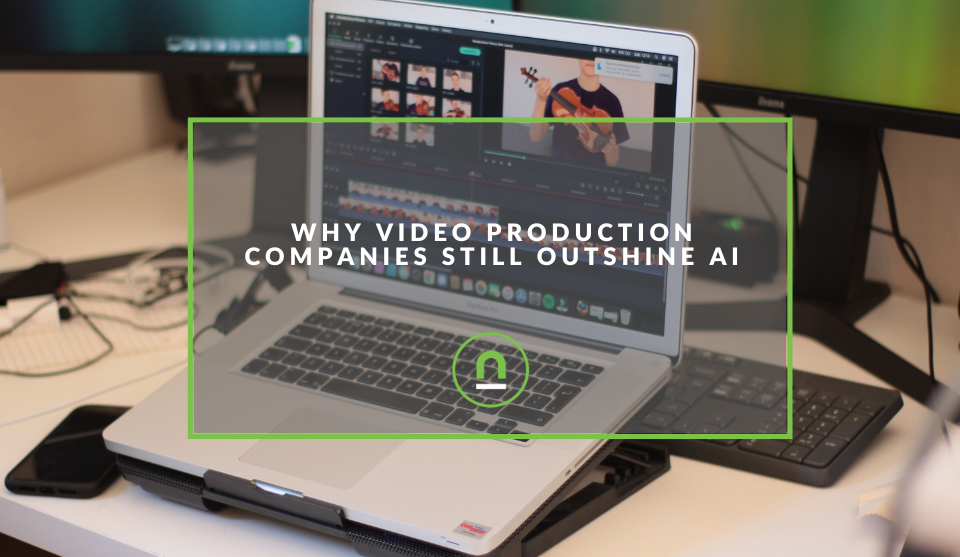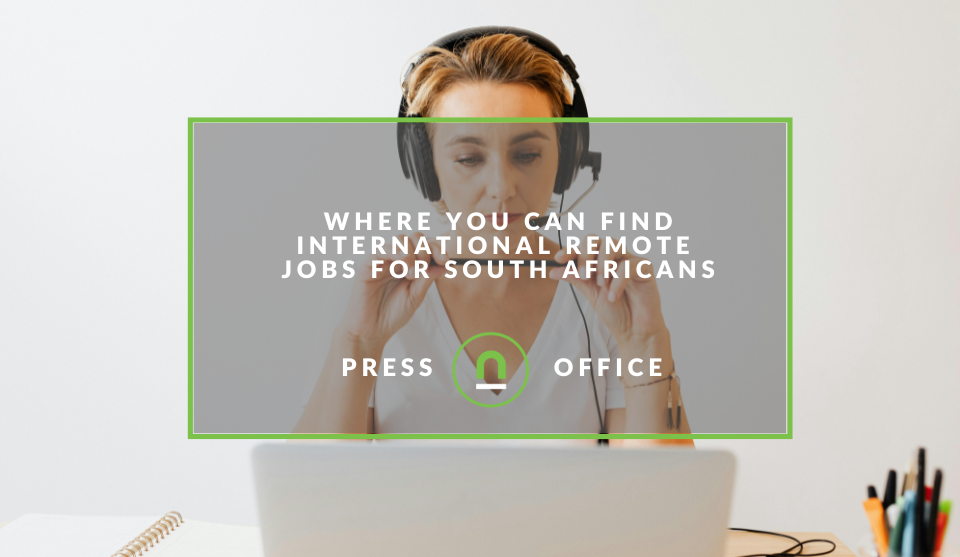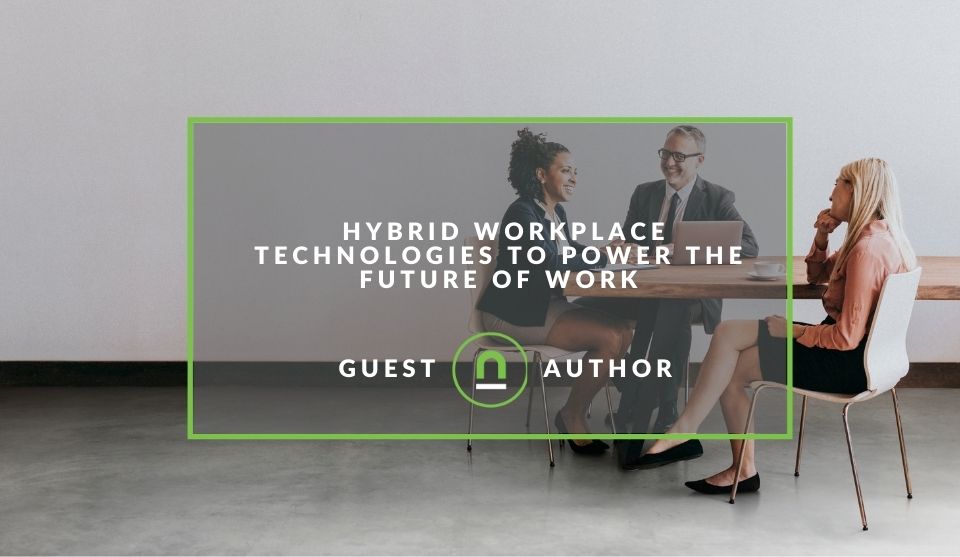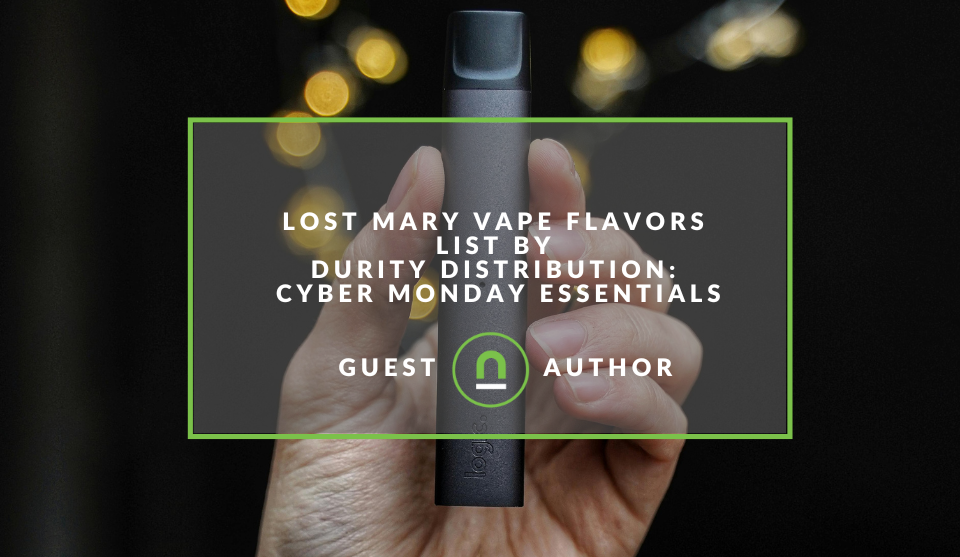Recent posts

nichemarket Advice
Why Video Production Companies Still Outshine AI
24 December 2025

Press Releases
Where You Can Find International Remote Jobs For South Africans
23 December 2025

Money Talks
Why Cross-Border Payments Are Slow, Tedious, and Expensive
17 December 2025

Money Talks
The Rise Of Trading Platforms In South Africa
16 December 2025
Popular posts
Extravaganza
Trending Music Hashtags To Get Your Posts Noticed
24 August 2018
Geek Chic
How To Fix iPhone/iPad Only Charging In Certain Positions
05 July 2020
Extravaganza
Trending Wedding Hashtags To Get Your Posts Noticed
18 September 2018
Money Talks
How To Find Coupons & Vouchers Online In South Africa
28 March 2019
5 Hybrid Workplace Technologies to Power the Future of Work
25 August 2021 | 0 comments | Posted by Ayush Maskara in Talent Agents
Hybrid offices, designed to foster onsite collaboration as well as remote work, are appealing to modern employees for the flexibility they offer, such as emphasis on productivity, reduced cost of operation, redefined collaboration, etc. To effectively manage this new work environment for both the organisation and the employees, it is imperative to have the right technology in place.
Most organisations can provide better employee experiences, lower employee turnover, improved recruitment, and gain or retain a competitive advantage with the utilisation of the right hybrid workplace technology. Many companies, such as Google, Amazon, Microsoft, etc., across the globe, have been exploring the transition to switch from remote work to hybrid work models for a few years now.
The adoption of technological tools to support this transition, such as content collaboration, reducing device downtime, team collaboration, etc., is becoming more complex. To lead tomorrow's workforce, HR chiefs or CIOs should have a technological blueprint planned for what tools are essential to be adopted and implemented.
Over the past few years, the workplace has seen a lot of discussion over how hybrid work should be managed - how often should employees work at the office? - when they ought not to? - Should they come to the office at all?
What's important to remember is that no matter what hybrid-work model organisations choose for their employees, they will need to disperse ample technology to support their modern digital workspaces.
What is a hybrid workplace model?
The hybrid workplace model is a classification of work environment that combines aspects of remote working with traditional office work. In a hybrid workplace, some or all employees can choose where and when they want to work, dividing their time between working at home and working in a central office.
If a company adopts a hybrid working model, only part of its workforce must attend regular offices, while the rest works remotely or from home. A hybrid workplace will enable the employees to remain productive and efficient in their preferred work locations while, at the same time, ensuring that the organisation's data remains secure through the implementation of technological tools.
But what kind of technologies support the blended workforce? We have compiled a list of 5 hybrid workplace technologies that organisations can implement to power the future of work. Let's dive in!
Team communication tool
An innate sign of danger could occur in an organisation when some employees show these signs of concern, such as - inequality of experience, inconsistent participation, and low engagement. An organisation's inability to engage employees due to miscommunication may be the silent killer.
A hybrid environment creates a real concern of passively disengaged employees, which leads to their departure. A very important tool that an organisation should consider during the transition to a hybrid working pattern is adopting a streamlined communication tool such as Notion, Threads, and Loom, etc.
Organisations implementing communication tools as a solution can bridge the distance gap with dedicated communication channels and platforms so that the communication gap is eliminated and productivity is retained.
Document management tools
Rather than relying on paper-based files to support remote workers, organisations need a solution for storing and sharing electronic files. Cloud storage options for file-sharing, such as Dropbox or Google Drive, etc., make it easy for employees to access, send files, and quickly distribute them among themselves.
Alternatively, an organisation can also utilise a Mobile Device Management (MDM) solution wherein the IT admins of the organisation can remotely push and upload, edit, publish or even delete mission-critical documents and data on different mobile devices such as Android phones or iOS phones through a single dashboard.
Transferring files through these applications eliminates the distracting flood of notifications and files from email inboxes. Various types of files can be shared, including documents, videos, and even software.
By implementing a document management system, organisations can ensure that only authorised employees of the organisation can see, edit and delete files shared. To guarantee that all employees have equal access to information, existing records should be digitised, in addition to those that still require a wet signature, such as those for government agencies.
Tools for managing performance through outcomes.
An employee-manager relationship that exists remotely or only occasionally in person must be based on clear goals, defined outcomes and include regular check-ins to ensure that the employees are receiving timely feedback. Putting an emphasis on outcomes means setting meaningful goals for your team and letting them determine the route that they take to get there, instead of micromanaging each task they need to accomplish in a specific order.
Those who manage hybrid teams cannot personally monitor their workers (or their entire teams, if they are remote themselves) and may therefore micromanage their employees by concentrating on small tasks.
Micromanagement and explicit monitoring not only facilitate subjective employee performance reviews but also lead to a reduced level of performance among employees.
Employees' productivity and creativity are hampered if they're monitored too closely. Managing continuous performance first and foremost is a strategic approach in facilitating the hybrid workplace. Using tools such as Graphic rating scales, 360-degree feedback, Management by objectives, etc., can help bridge the gap.
Choose tools to manage your Endpoint.
Establishing an organisation's endpoint security system protects the numerous endpoint devices deployed by the organisation carrying the organisational assets on a centralised network, such as mobile devices, laptops, desktop computers, and servers.
A key function of endpoint security is scanning antivirus and firewall programs, making sure patches are up to date, and preventing dangerous processes from running. It also maintains data integrity by preventing confidential information from being cached.
Mobile applications
The use of mobile devices is growing each day exponentially even before the advent of the COVID-19 pandemic. During the pandemic, mobile tools became crucial for ensuring workers' connectivity, implementing new technology, and adapting to an entirely new way of doing business.
Whatever the circumstances, employees need certain capabilities to be able to get their work done, whether they are working in an office or remotely.
Access to organisational information, authorised access to data and documents, and access to connectivity are a few options that should be included. The importance of mobile software and tools plays a pivotal role in ensuring this productivity.
Closing lines
By utilising the right tools, HR leaders can effectively retain and attract top talent, achieve inclusion goals, and ensure employee engagement with the same amount of rigour, depth, and transparency as in the pre-hybrid day.
Employers and employees can coordinate in-office and remote activities, gather data about what's working, and then tweak it to suit the ideal hybrid blend by putting infrastructure in place that makes the hybrid more measurable, observable, and adaptable.
About the author
Ayush Maskara is a Junior Content Writer at Scalefusion Windows MDM Solution. A media science graduate, a photographer, a fiction author, a storyteller, a fiction manuscript editor, and an avid self-help reader, Ayush has been penning the creative wisdom for six years and has stepped into the IT domain for further exploration and staying awake with technological trends across the globe.
Tell us your story
Would you like to write for nichemarket just like Ayush has? Find out how to submit a guest post and when you're ready, you can contact us.
Are you looking to promote your business?
South African businesses and freelancers can create your free business listing on nichemarket. The more information you provide about your business, the easier it will be for your customers to find you online.
Registering with nichemarket is easy; all you will need to do is head over to our sign up form and follow the instructions. If you require a more detailed guide on how to create your profile or your listing, then we highly recommend you check out the following articles.
Recommended reading
If you enjoyed this post and have time to spare why not check out these related posts and dive deeper down the rabbit hole that is remote work.
- As More Types of Work Go Online, More Workers Are Going Nomadic
- Why Blue Light Glasses Are A Must For Digital Nomads
- How To Find Tech Vacancies in South Africa
- How To Build Relationships With Remote Workers
- 12 Times You When Should You Consider Micromanagement
- How to Create a Company Culture That Drives Performance
- Marketing Tool Discounts Due To COVID-19
You might also like
Lost Mary Vape Flavors List By Durity Distribution
01 December 2025
Posted by Christine Lowe in Shopaholics
A Cyber Monday shopping guide to all the best Lost Mary Vape flavours available, brought to you by Durity Distribution in Idaho. Find the best vape f...
Read moreThe South African VAT Threshold Chokehold
05 December 2025
Posted by Che Kohler in nichemarket Advice
How South Africa's R1 Million Limit Keeps Small Businesses From Developing, And Why Even Adjusting For Inflation Alone Would Free Up Burdens On Small...
Read more{{comment.sUserName}}
{{comment.iDayLastEdit}} day ago
{{comment.iDayLastEdit}} days ago
 {{blogcategory.sCategoryName}}
{{blogcategory.sCategoryName}}


